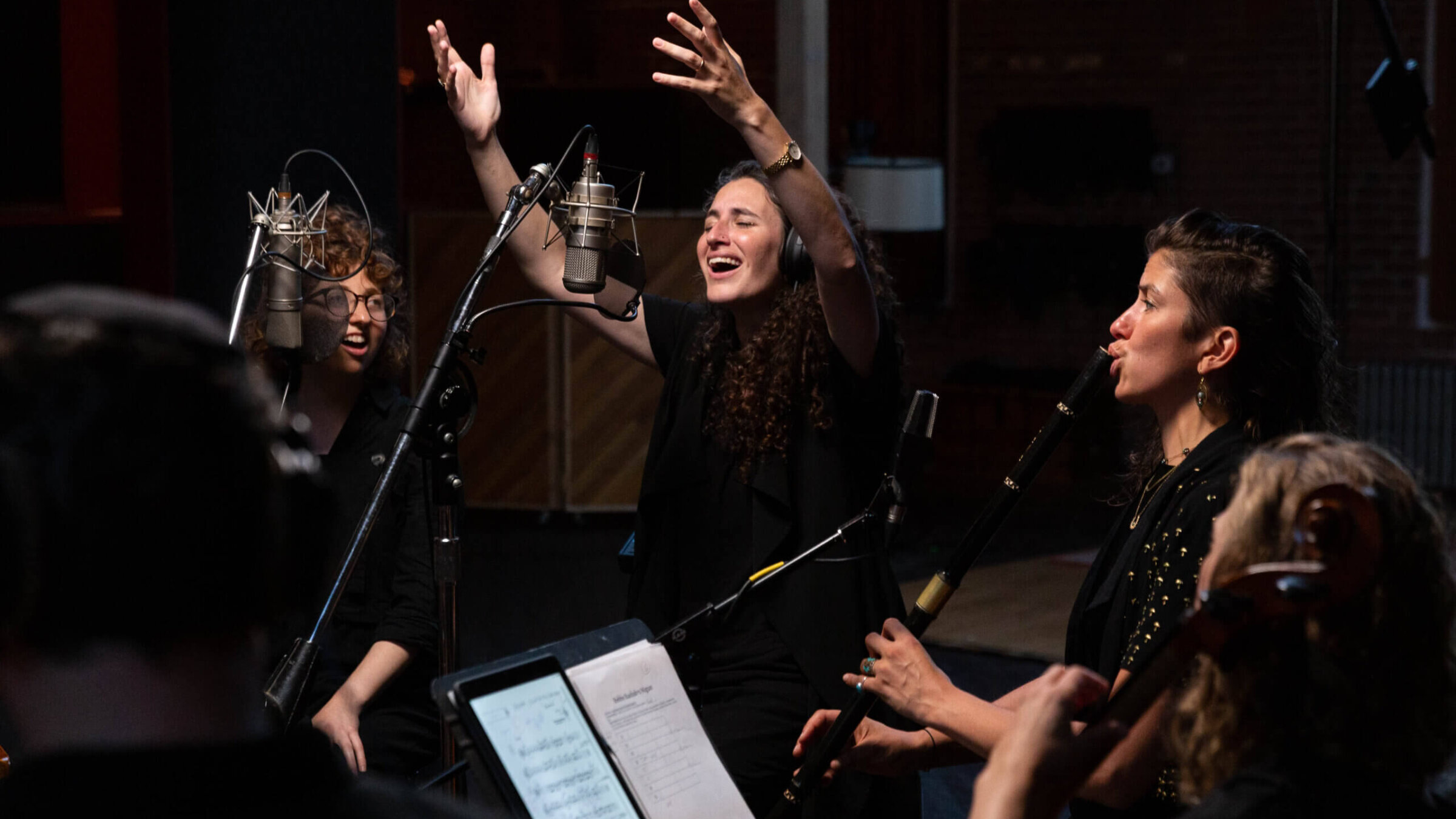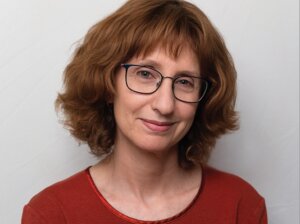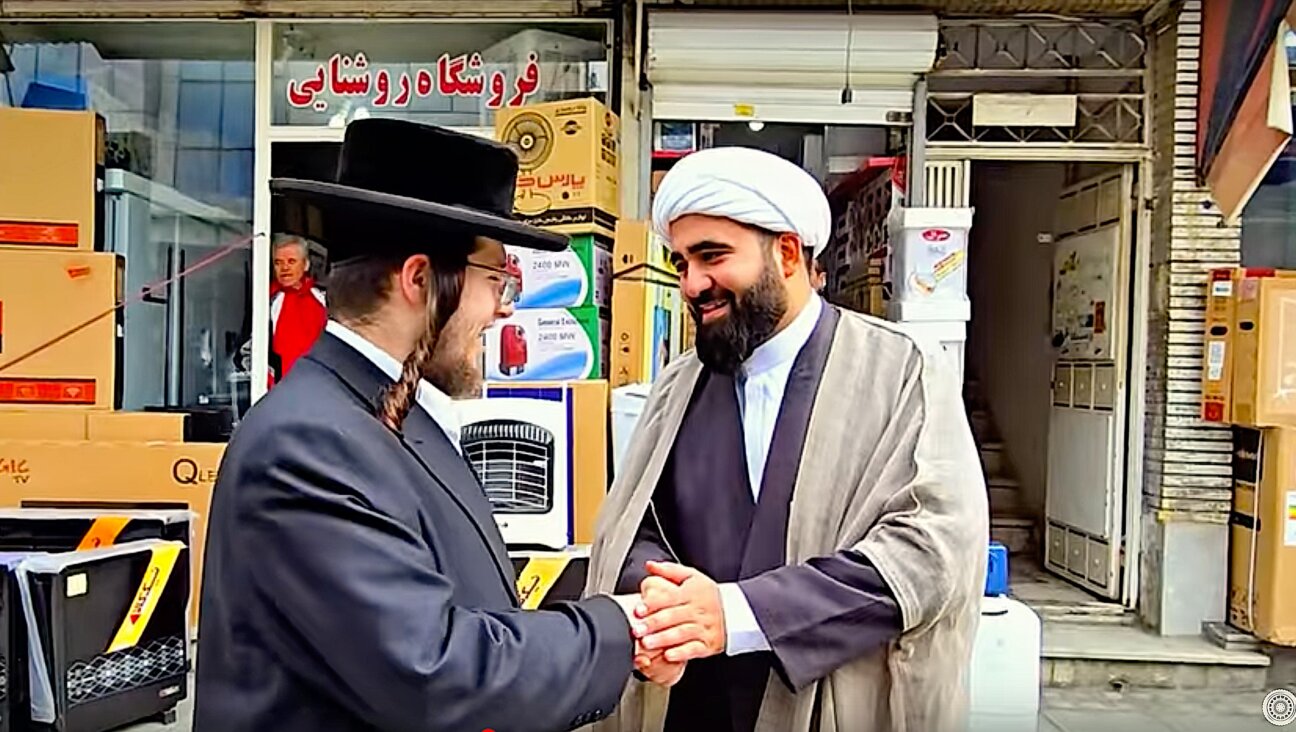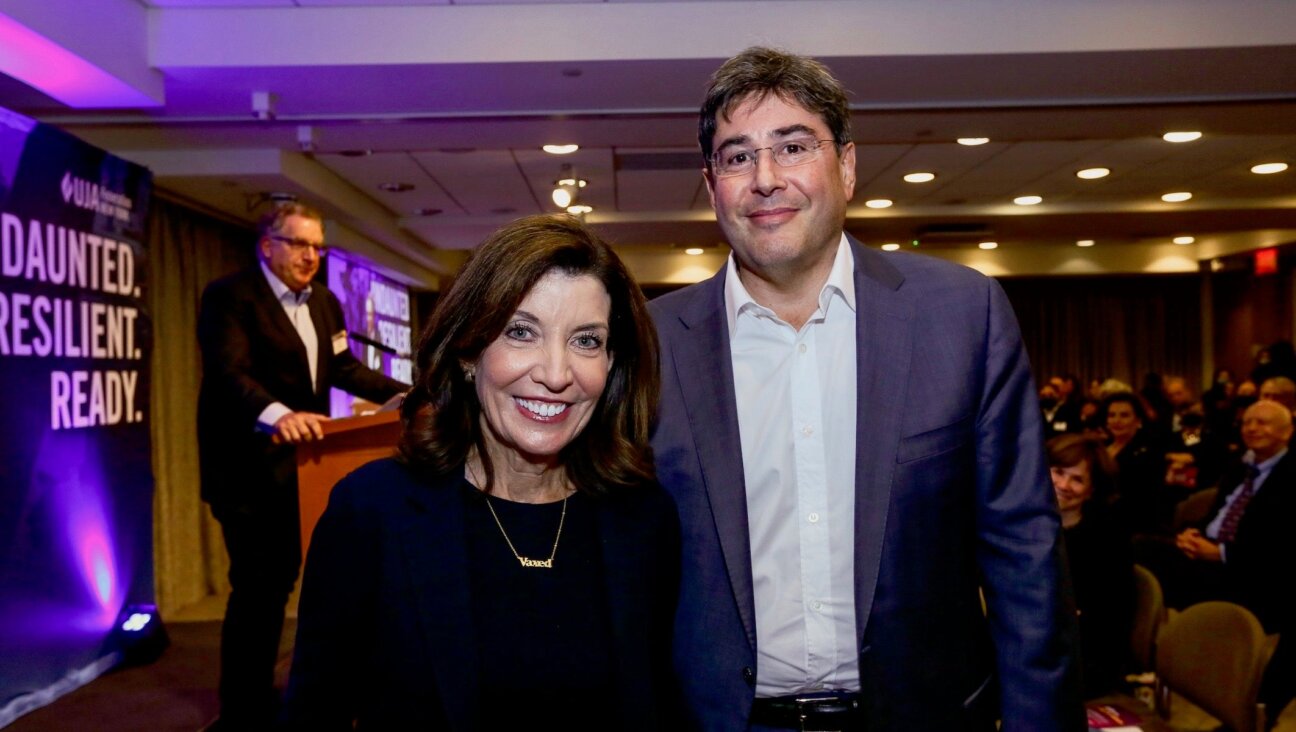A remarkable album of soulful Hasidic melodies performed by women
Hasidic men have been singing these tunes, called nigunim, for centuries, especially in the presence of their Rebbe.

Photo by Ali Cherkis
A remarkable new album of traditional Hasidic nigunim, wordless melodies, is here. And it’s giving listeners a taste of the soulful, unadorned way in which rebbes used to sing them in pre-war Eastern Europe.
What’s even more unusual is that the singers are all women.
In fact, Kapelye (the Yiddish word for “band”) may be the first full-length album of Hasidic nigunim performed by women. It features 22 singers from various Jewish denominations perform traditional Chabad melodies that are publicly sung only by men. The reason for this is kol isha — the laws which prohibit men from hearing a woman singing. The 13 tracks on Kapelya blend Hasidic prayers with elements of Yiddish folk and klezmer music, hauntingly resonant of the musical traditions of Eastern European Jewry.
“From a musical point of view it’s really significant that they kept it grounded and realistic. It’s like people sitting around and singing, instead of trying to make it sound like art music,” said Jordan Hirsch, a musician in the klezmer and Hasidic world who performs frequently for the Chabad community and knows some of the nigunim on the album. “It’s clear that they put the nigun, and not the ego of the performers, at the forefront.”
Lead singer Chana Raskin learned the nigunim as a little girl
The lead singer is 35-year old Chana Raskin. Raised in the Chabad community of Crown Heights she now lives with her husband Dani and two children in Jerusalem. Raskin, called RAZA when she’s performing, co-produced the album with musician Joey Weisenberg through his organization, the Rising Song Institute. “Joey was the one who first pushed me to record the nigunim,” Raskin told the Forward.
Raskin has loved listening to and singing the sacred melodies of Chabad Hasidim since she was a little girl. Part of the reason has to do with her storied family history which includes a direct lineage to the Alter Rebbe, founder of the Chabad Hasidic movement. One of eight children, Raskin would often accompany her father to farbrengens on shabbos afternoons. Farbrengens are joyous gatherings combining words of Torah with the singing of nigunim.
On Simchat Torah she would sit perched on his shoulders, as he and the other men passionately sang and danced with the Torah scrolls. “It was so powerful, that feeling of connection to the rebbe,” she said. She wasn’t the only girl taking part in those festive gatherings. “I could see other little girls crawling tsvishn di fis,” she said, using the Yiddish expression for “between the men’s feet.”
“Yiddish was my first language,” Raskin said. Her mother was Israeli and spoke a broken English, especially at the beginning of their marriage. But her Yiddish was fluent so that was the most comfortable common language for her parents. “Their Yiddish flowed so naturally that for years I didn’t even know it was Yiddish they were speaking!”
Seeing nigunim as divine channels
As a teenager Raskin often sang nigunim with other girls at her school, Beis Rivka. She would try to recreate the heartfelt way that older generations of Hasidim would sing them. She had heard many recordings of nigunim heavily influenced by hip hop and other contemporary musical styles. But this was not what she was looking for. Her model wasn’t Matisyahu, but rather the Mitele Rebbe Dov Ber (1773-1827). He would invite a musical troupe of vocalists and musicians to perform and sing during special farbrengens, especially on Hanukkah and Lag B’Omer. Sometimes he asked them to play and sing for him personally when he needed or wanted to be uplifted spiritually.
“It’s all about seder nigunim,” Raskin said. The phrase refers to the proper way to sing sacred tunes, like divine channels, especially those nigunim composed by a rebbe. For example, one important element in the singing of nigunim is bitul hayesh, the supplication of the ego, the total humbling of the self. “I used to have a visceral reaction when people at school would say: ‘You should have a solo, you have a pretty voice,’ Raskin said. “When someone’s singing a nigun, it’s not about that person, it’s more like a divine service.”
About 15 years ago Raskin began exploring her own spiritual path. In 2010 she did a summer program at Yeshivat Hadar, an egalitarian community of Torah learning in Manhattan. There, among the various subjects, she also studied Talmud, which has traditionally been something only men do. “It was my first immersive Torah space that was both committed to Halacha, yet not exclusively Orthodox,” she said.
She had always loved singing Hasidic nigunim. But due to the rules of kol isha, the prohibition for a man to hear a woman sing, she sang them to herself or privately with her girlfriends.
The idea of recording an album filled her with doubt
It was at Hadar that she met Weisenberg, who eventually founded the Rising Song Institute. A Philadelphia-based international community of musicians and prayer leaders, the institute seeks to re-imagine traditional Jewish music as a spiritual practice.
But when Weisenberg suggested she record an album, she was filled with doubt. “It was such a painful transition for me until I accepted this as my true calling,” Raskin said. “I asked myself: Who am I? I’m not a musician, I’m a woman, and I’ve stepped away from the Chabad community. What if I’m totally shunned?”
Her family was completely supportive, however. In fact, her parents and siblings got together to sponsor a track on the album. They chose the Klimovitcher Nigun since Klimovich (now in Belarus) is the shtetl where her mother’s parents and grandparents were born and raised.
“Even men are thanking me for doing this project, for totally honoring the nigun. When I sing, always ask the nigun: What do you want? I think about the person who composed it. Often I recall memories of my childhood, the farbrengens, the hakofes (the dancing with the Torah scrolls on Simchat Torah) with Hasidim dancing and shvitzing until 4 a.m. I remember how it was only then that the Rebbe started teaching a nigun.” She finds that calling up these associations deepen her connection to the melody as she’s singing it.
“We don’t hear women performing these songs inside the Hasidic community,” Hirsch said. “So when you do hear it, especially when it comes from a place of deep understanding of the origins of the song, you get a new perspective. It’s kind of like when you’re used to hearing “Eine Kleine Nachtmusik” with an orchestra all your life, and suddenly you hear it with a simple folk guitar. That gives it a whole new freshness.”
Follow and listen to Kapelya on Spotify.
























